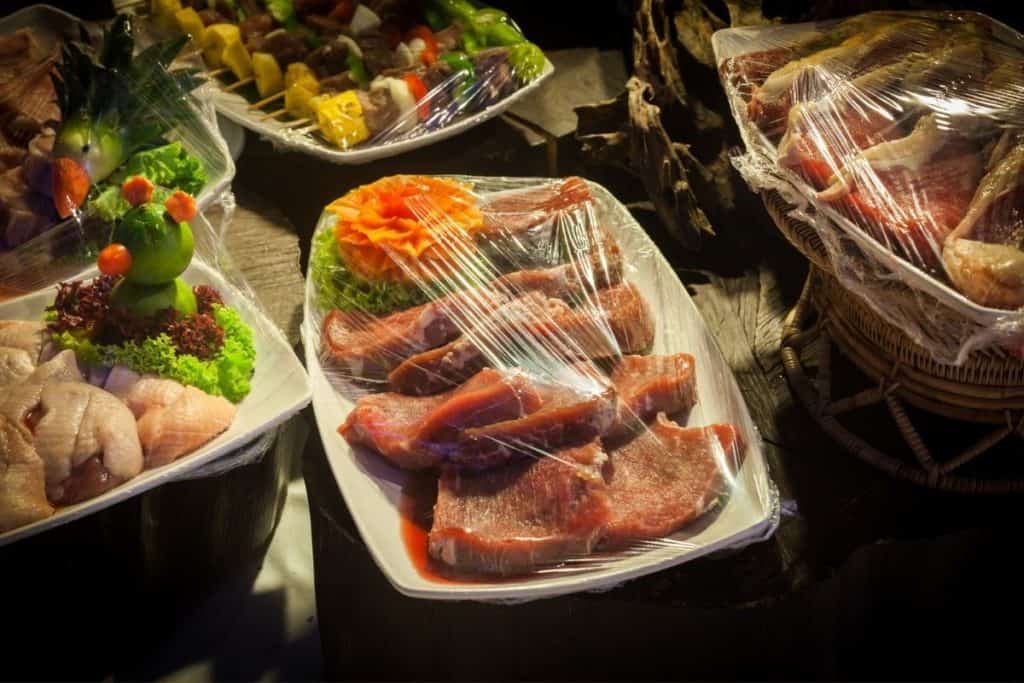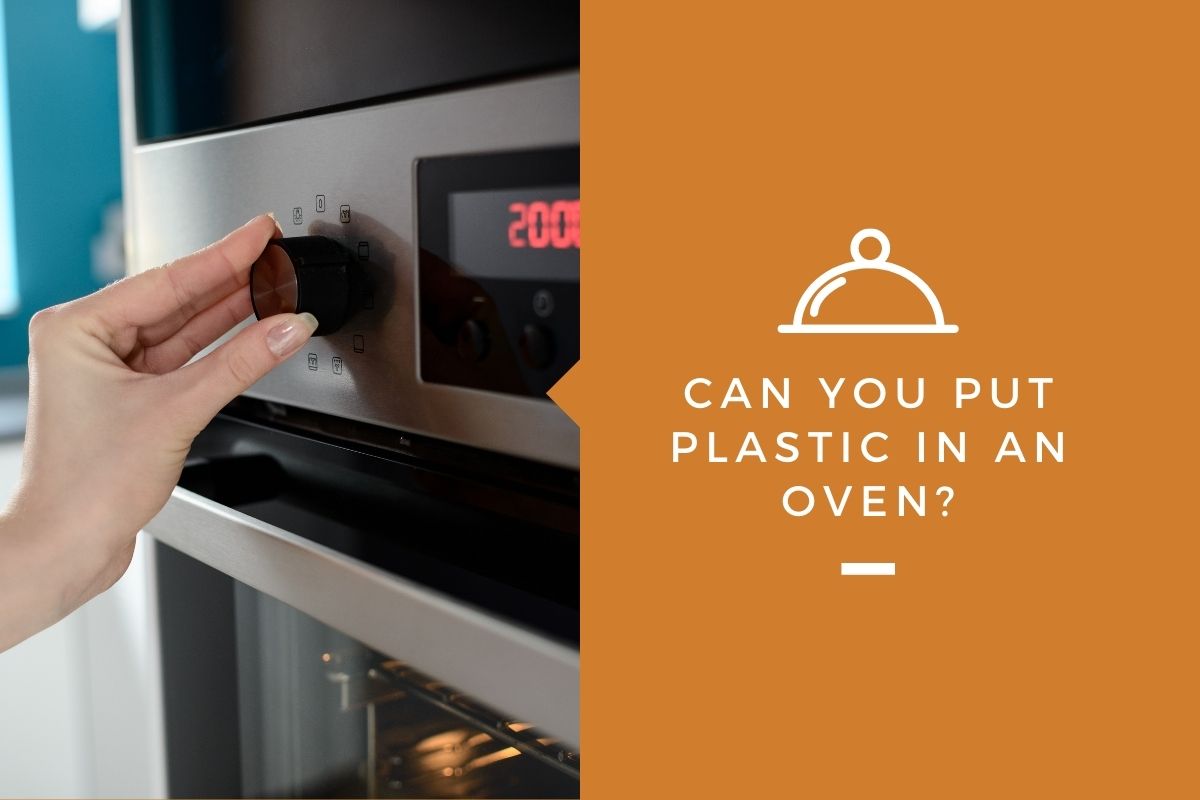Certain things are learned the hard way, through the exhausting path of trial and error. To think and analyze before acting is a gift that we seem to lose during periods of our lives. When it comes to placing certain materials in an environment where they will be exposed to high temperatures, thinking before acting is essential.
There’s a bunch of things to considering depending on the appliance and the way it is designed. When you get the hang of it you will understand what you can and what you can’t place in an oven, a microwave oven, in an air fryer, pressure cooker, etc.
Plastic should never be placed in a heated oven. Plastic items will start to soften at very low temperatures, and begin to melt and produce fumes at slightly higher temperatures. As the plastic is heated it will begin leeching chemicals long before it starts melting, and once it has started melting it will be incredibly hard to clean, and could potentially catch fire.
Don’t put plastic in an oven. In addition to creating a mess that will take more effort than necessary to get rid of, placing plastic in a heated oven could also lead to certain health risks.
But does this really apply to all kinds of plastic or are there exceptions to the rule?
What Plastic Can Go in the Oven?
There’s a type of plastic known as CPET (short for Crystallized Polyethylene Terephthalate) that’s been crystallized in order to increase its resistance to heat. It’s estimated that CPET can tolerate temperatures between 32 and 400 degrees Fahrenheit without melting.
This doesn’t simply mean that CPET is entirely safe to use in an oven, just that it’s capable of handling the heat better than regular plastic.
If the oven surpasses 400 degrees, the plastic may very well start melting and leaching into your food and this could, potentially, cause illness. When using ovenable containers made of CPET, it’s important to keep track of temperature to make sure it doesn’t exceed the limit of 400 degrees Fahrenheit.
CPET is…
- Recyclable
- Safe to put in the microwave and freezer
- Safe to put in the dishwasher
CPET is not…
- As affordable as regular plastic containers
- Completely immune to heat, just more tolerant than regular plastic.
At What Temperature Does Plastic Melt in the Oven?
You will only see me placing plastic in an oven under two circumstances, it’s either that the oven is cold or that the plastic is somewhat resistant to heat – also known as ovenable. But what’s the definition of a cold oven? Is it an oven that isn’t turned on or an oven that runs at very low temperatures?
At what temperature does plastic really melt? Well, because there’s a wide variety of different types of plastic, the answer is that it depends. The melting point will vary greatly from plastic to plastic, which can be seen when you compare polyvinyl chloride with some of the more sturdy plastics.
Polyvinyl will start melting in as little as 175 degrees Fahrenheit while most sturdy plastics can withstand temperatures way above that. However, at 500 degrees Fahrenheit most plastics will already have melted.
Somewhere between 175-300 degrees is probably an honest range for most types of plastic.
You do not want the plastic to melt in your oven, or anywhere in your house – the fumes produced by heating plastics are flammable, especially in large concentrations. Burning plastic can, therefore, quite easily result in a fire.
Is Microwavable Plastic Safe in the Oven?

Containers are sold as either microwave-safe or oven-safe and to be frank, it’s quite easy to get them mixed up or just take for granted that one thing also means the other. But that’s not the case, if a dish or a container is labeled as microwave-safe, it doesn’t automatically mean that it’s safe or smart to use it in the oven.
The qualities that a dish needs to be microwave-safe are not the same as those that it would need to be safe to use in the oven. The microwave doesn’t heat the plastic for a long time, while the oven will expose the plastic to high heat for a long period of time. This will, under most circumstances, cause the plastic to melt.
There are dishes and containers that are both microwave and oven-safe but they’re not made of plastic. If the dish is, in fact, safe to use in both the microwave and the oven, it will be labeled as such. This small sub-set of containers includes Pyrex, ceramic, and stoneware pieces.
How Do You Get Plastic out of an Oven?
The thing that makes melted plastic such a nightmare, and something you want to avoid at all cost, is that it takes quite an effort to get rid of. Once you’ve burned something and the plastic has melted, and merged with the surface that it was placed on, removing it is no easy task.
Thankfully, as more and more people have experienced this, more methods that simplify the process have been developed.
Removing plastic isn’t as horrendous now as it used to be before I found out about these methods, but I still suggest that you do everything in your power to avoid melting plastic in your oven.
But let’s say the accident has already happened, we’re here, we’ve learned from our failures, and we’re ready to tackle the problem. What do we do?
In a regular electric oven, the process is quite simple. First, place a bag of ice on the melted plastic to chill and harden it. Then proceed to scrape the plastic off the surface using a razor blade scraper until you’ve removed all of the melted plastic from the oven. The same can be done in a gas oven.
Carefully scraping the plastic from the oven with a razor blade should not damage the oven’s interior.
Can I Use Tupperware in an Oven?
No, Tupperware shouldn’t be used in an oven. Tupperware containers are made of plastic and won’t be able to withstand the high heat, this will result in a meltdown.
Tupperware shouldn’t be used in, under, or on other appliances that operate as ovens do. This includes grills, stovetops, convection microwaves, and conventional ovens.
Tupperware can, however, be used in a microwave as long as the container carries the microwave-safe symbol.
Placing a Tupperware container in an oven will lead to leaching, similar to heating other plastic containers. According to Tupperwareindia.com, Tupperware can withstand temperatures of 80 degrees Celsius.
It’s rare to run an oven at 80 degrees Celsius or less, which tells us that Tupperware containers and ovens are far from compatible.
Conclusion
It’s become clear why you shouldn’t place plastic in an oven. There’s just no compatibility between the environment that an oven hosts and the properties that most plastics have. They shouldn’t be combined. There’s nothing to gain from doing so, in fact, there’s more to lose.
Using an oven-safe substitute is definitely the way to go. Also, microwave-safe doesn’t automatically render the item oven-safe. They are two different things and operate nothing like one another. Be careful to prevent harming yourself and those around you! Good luck! Thank you for reading.

